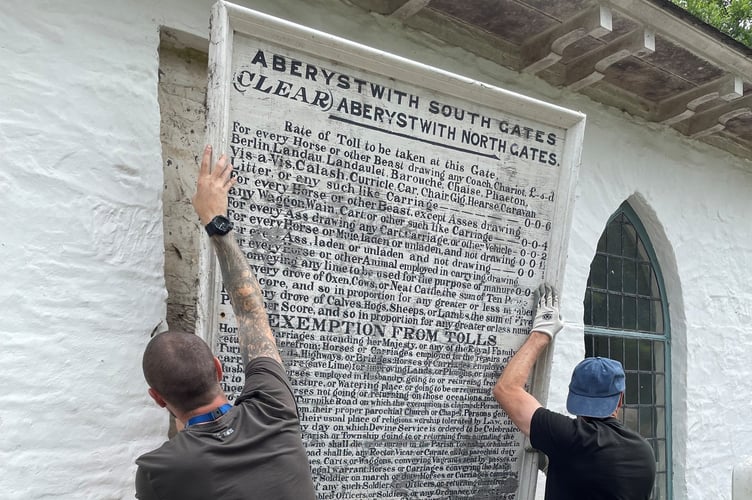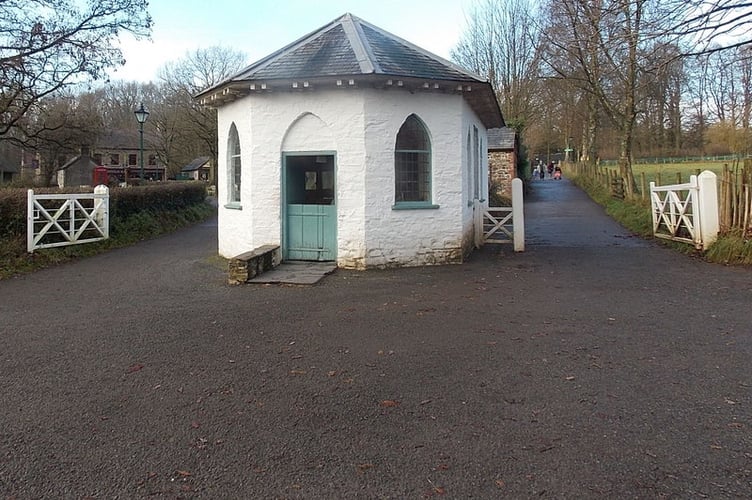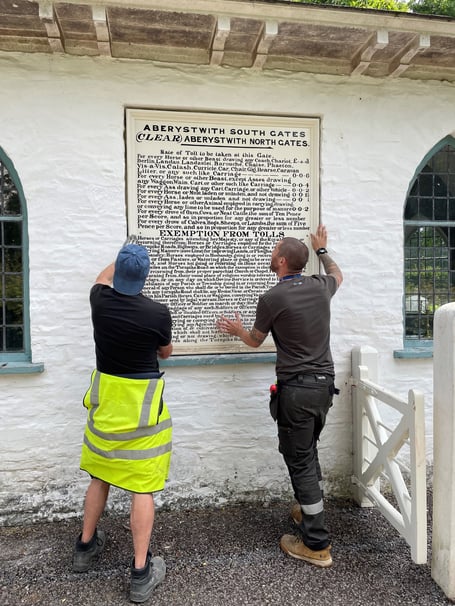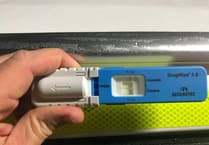SIGNS that once displayed how much travel would cost in and out of Aberystwyth have been carefully restored at the iconic Penparcau tollhouse.
The Penparcau tollhouse stood in the village from 1771 and covered all traffic travelling south of Aberystwyth and was a valuable gate, taking about a quarter of all the tolls in the county.
The tollhouse remained open until 1889.

It was moved to St Fagans near Cardiff in 1962, where conservationists rebuilt it brick by brick where it still stands today at the open air museum.
St Fagans said: "Our conservation painters and carpenters have been hard at work creating and fitting a new sign for the tollhouse based on the original in our collection."
200 years ago, travelling in Wales was a costly business, with tollhouses scattered across the country’s roads.
Roads were the responsibility of the Turnpike Trusts.
They used money loaned by rich landowners to fund their construction and maintenance.
To repay the loan, the Trusts placed gates, barriers or chains across popular routes. Travellers could only use the roads once a payment had been made at a tollhouse like this one. The sign on the side of the building lists the various charges for vehicles and animals.

Most of the people using these routes were poor tenant farmers who were often stopped and charged more than once a day.
They were already paying rent to the wealthy landowners, a tenth of their income to the Church and taxes, too. Tollhouses became a target for their increased anger. In south-west Wales this anger turned to violence.
Between 1839 and 1844 a group known as the Daughters of Rebecca led the protests.
They were mostly men who blackened their faces and wore women’s clothes to disguise themselves.
Armed with axes, they attacked 250 gates and tollhouses. Troops were sent in to control the situation and arrests were made. Many protesters were sent to prison and some of the leaders were transported to Australia.
Even after such fierce public protest, tollhouses remained in operation for another 20 years.
The first tollkeeper at Penparcau was David Jones of Dihewyd, with the first tolls being charged on 23 March 1772.
David Jones lived here – one end of the building was used for collecting tolls and the other as a living area where there is also a fireplace.
St Fagans is free to enter and has more than 40 buildings of historical importance from all over Wales





Comments
This article has no comments yet. Be the first to leave a comment.